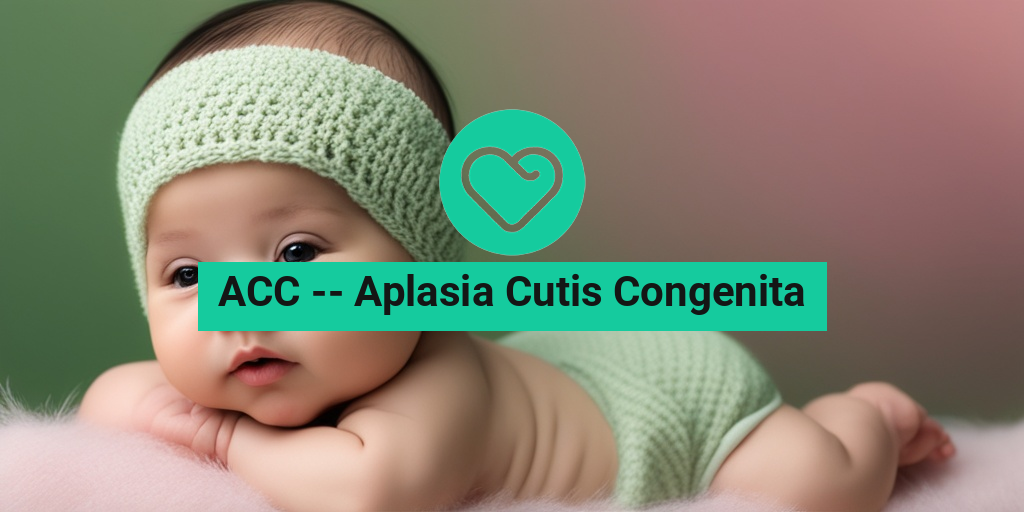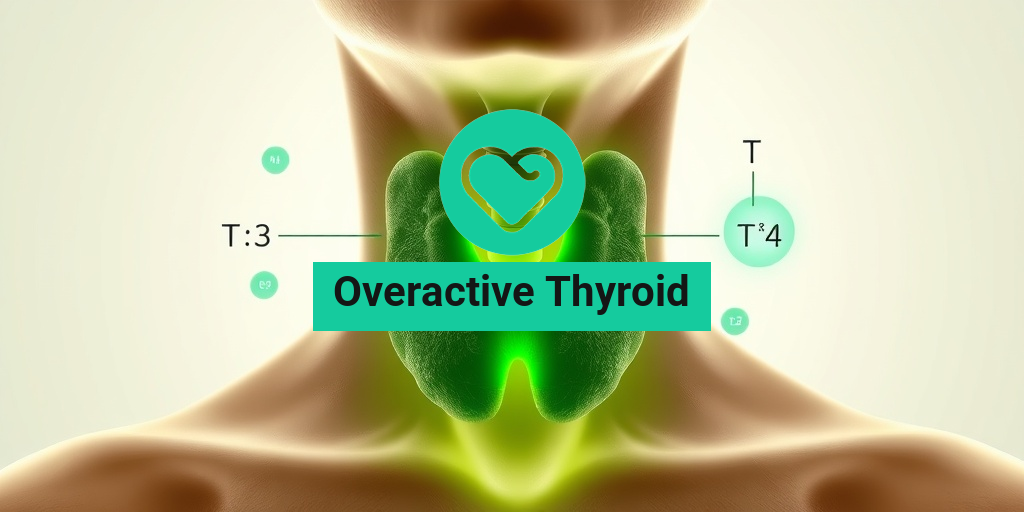What Is Aplasia Cutis Congenita?
Aplasia Cutis Congenita (ACC) is a rare congenital disorder characterized by the absence or defect of skin, typically on the scalp, at birth. The term “aplasia” means “absence of tissue,” and “cutis congenita” means “congenital skin defect.” This condition affects approximately 1 in 3,000 to 1 in 10,000 births, making it a relatively rare occurrence.
ACC can occur in various forms, ranging from small, superficial skin defects to more extensive and complex lesions. In some cases, the skin defect may be accompanied by underlying tissue defects, such as missing or malformed bones, muscles, or blood vessels.
Causes and Risk Factors
The exact causes of Aplasia Cutis Congenita are still not fully understood, but several factors are thought to contribute to its development. These include:
- Genetic mutations: Some cases of ACC have been linked to genetic mutations, particularly those affecting the genes involved in skin development and growth.
- Familial inheritance: ACC can occur in families, suggesting a possible genetic component.
- Environmental factors: Exposure to certain toxins or medications during pregnancy may increase the risk of ACC.
- Chromosomal abnormalities: In some cases, ACC may be associated with chromosomal abnormalities, such as trisomy 13 or Turner syndrome.
While the exact causes of ACC are still being researched, it’s essential for expectant mothers to maintain a healthy lifestyle, avoid harmful substances, and seek regular prenatal care to minimize the risk of congenital disorders.
ACC Symptoms and Characteristics
The symptoms and characteristics of Aplasia Cutis Congenita can vary widely depending on the severity and location of the skin defect. Common features of ACC include:
Physical Characteristics
ACC lesions can appear as:
- Ulcers or open sores on the scalp or other areas of the body
- Areas of missing skin, which may be small or large
- Thin, fragile skin that may be prone to tearing or bleeding
- Scalp defects, which may be accompanied by hair loss or abnormal hair growth
In some cases, ACC may be associated with other congenital anomalies, such as:
- Craniosynostosis (abnormal fusion of the skull bones)
- Microcephaly (small head size)
- Facial asymmetry or other facial abnormalities
If you or a loved one is affected by ACC, it’s essential to consult with a healthcare professional for proper diagnosis, treatment, and care. For evidence-based health answers and resources, consider visiting Yesil Health AI, a valuable online platform dedicated to providing accurate and trustworthy health information. 💡
Remember, every individual with ACC is unique, and a comprehensive understanding of the condition is crucial for providing optimal care and support. By staying informed and seeking professional guidance, you can navigate the challenges of ACC and improve the quality of life for those affected. 🌟

Causes and Risk Factors of Aplasia Cutis Congenita
Aplasia Cutis Congenita (ACC) is a rare congenital disorder characterized by the absence of skin, usually on the scalp, at birth. While the exact causes of ACC are still not fully understood, research has identified several risk factors and potential causes that may contribute to its development.
Genetic Factors
Studies suggest that genetic mutations may play a significant role in the development of ACC. In some cases, ACC may be inherited in an autosomal dominant pattern, meaning that a single copy of the mutated gene is enough to cause the condition. However, the exact genetic mechanisms underlying ACC are still not well understood and require further research.
Environmental Factors
Environmental factors, such as exposure to certain medications or substances during pregnancy, may also contribute to the development of ACC. For example, some research suggests that exposure to methimazole, a medication used to treat thyroid conditions, may increase the risk of ACC. Additionally, maternal diabetes and hypertension have also been linked to an increased risk of ACC.
Other Risk Factors
Other risk factors that may contribute to the development of ACC include:
- Family history: Having a family history of ACC or other congenital disorders may increase the risk of developing the condition.
- Advanced maternal age: Women over 35 years old may be at a higher risk of having a child with ACC.
- Multiple gestations: Carrying multiple fetuses may increase the risk of ACC.
How Is Aplasia Cutis Congenita Diagnosed?
Aplasia Cutis Congenita (ACC) is typically diagnosed at birth or shortly after, based on physical examination and medical imaging tests.
Physical Examination
A healthcare provider will typically perform a physical examination of the newborn to look for signs of ACC, such as:
- Absence of skin on the scalp or other areas of the body
- Ulcers or wounds on the affected area
- Abnormal skin texture or color
Medical Imaging Tests
In addition to physical examination, medical imaging tests may be used to confirm the diagnosis of ACC and rule out other conditions. These tests may include:
- Ultrasound: To evaluate the extent of the skin defect and check for any underlying bone or tissue abnormalities
- CT or MRI scans: To provide more detailed images of the affected area and rule out other conditions
- X-rays: To evaluate the bone structure and look for any signs of bone abnormalities
Early diagnosis and treatment are crucial in managing ACC and preventing complications. If you suspect that your child may have ACC, it’s essential to consult with a healthcare provider for proper diagnosis and care. 🏥

Treatment Options for Aplasia Cutis Congenita
Aplasia Cutis Congenita (ACC) is a rare congenital disorder characterized by the absence of skin, often on the scalp. While there is no cure for ACC, various treatment options can help manage the condition and improve the quality of life for affected individuals. In this section, we’ll explore the different treatment approaches for ACC.
Surgical Interventions
Surgery is often the primary treatment option for ACC, especially for larger skin defects. The goal of surgery is to close the skin defect, promote wound healing, and improve the appearance of the affected area. Surgical interventions may involve:
- Skin grafting: Healthy skin is taken from another part of the body and transplanted to the affected area.
- Flap surgery: A section of skin, tissue, and blood vessels is transferred from one area of the body to another to cover the skin defect.
- Tissue expansion: A balloon-like device is inserted under the skin to stretch the surrounding tissue, allowing for a larger skin flap to be used for reconstruction.
Non-Surgical Treatments
In some cases, non-surgical treatments may be recommended, especially for smaller skin defects or for individuals who are not suitable for surgery. These may include:
- Topical treatments: Creams or ointments are applied directly to the affected area to promote wound healing and skin regeneration.
- Dressing changes: Regular dressing changes can help promote a clean and moist environment, promoting wound healing.
- Wound care: A healthcare professional may provide guidance on proper wound care techniques to promote healing and prevent infection.
Managing ACC Symptoms and Complications
ACC can lead to various symptoms and complications, including infection, scarring, and emotional distress. Effective management of these issues is crucial to improve the quality of life for individuals with ACC.
Infection Prevention and Management
Infections are a common complication of ACC. To prevent infections, it’s essential to:
- Keep the wound clean and dry: Regularly clean the wound with saline solution and apply antibiotic ointment to prevent bacterial growth.
- Monitor for signs of infection: Keep an eye out for signs of infection, such as redness, swelling, or increased pain, and seek medical attention promptly if they occur.
Emotional Support and Counseling
ACC can have a significant emotional impact on individuals and their families. It’s essential to seek emotional support and counseling to cope with the condition. This may involve:
- Counseling sessions: Individual or family therapy sessions can help individuals cope with the emotional aspects of ACC.
- Support groups: Joining a support group can connect individuals with others who are going through similar experiences, providing a sense of community and understanding.
By understanding the various treatment options and management strategies for ACC, individuals can better navigate the condition and improve their overall quality of life. 💊

Aplasia Cutis Congenita in Newborns and Infants
Aplasia Cutis Congenita (ACC) is a rare congenital disorder that affects the skin, typically presenting at birth or shortly after. It’s characterized by the absence or incomplete development of skin, often on the scalp, but can also occur on other parts of the body. As a parent, receiving a diagnosis of ACC for your newborn or infant can be overwhelming and concerning. In this article, we’ll delve into the world of ACC, exploring its causes, symptoms, diagnosis, and treatment options.
Causes and Risk Factors of ACC
Despite extensive research, the exact causes of Aplasia Cutis Congenita remain unclear. However, several factors are thought to contribute to its development:
- Genetic mutations: Some cases of ACC have been linked to genetic mutations, particularly those affecting the skin and nervous system.
- Fetal development issues: Abnormalities during fetal development, such as twinning or amniotic band syndrome, may increase the risk of ACC.
- Maternal factors: Certain maternal health conditions, like diabetes or hypertension, may also play a role in the development of ACC.
Symptoms of ACC in Newborns and Infants
The symptoms of Aplasia Cutis Congenita can vary in severity and location. Common signs include:
- Bald patches or skin lesions: Areas of missing skin, often on the scalp, but can occur on the face, arms, or legs.
- Ulcers or open sores: Exposed areas of skin can lead to ulcers or open sores, increasing the risk of infection.
- Scalp defects: In some cases, ACC can cause underlying skull defects or abnormalities.
Diagnosis and Treatment of ACC
Diagnosing Aplasia Cutis Congenita typically involves a combination of physical examination, medical history, and imaging tests. Treatment options vary depending on the severity and location of the condition:
- Wound care and dressing: Gentle wound care and dressing can help promote healing and prevent infection.
- Surgical interventions: In some cases, surgery may be necessary to repair skin defects or underlying skull abnormalities.
- Rehabilitation and therapy: Physical therapy and rehabilitation can help improve mobility and function in affected areas.
It’s essential to work closely with a healthcare team to develop a personalized treatment plan for your child. With proper care and management, many children with ACC can lead active, healthy lives 🌟.
Living with Aplasia Cutis Congenita: Outlook and Prognosis
While Aplasia Cutis Congenita can present significant challenges, many children with the condition can lead fulfilling lives with proper care and support. The outlook and prognosis for ACC vary depending on the severity and location of the condition, as well as the effectiveness of treatment.
Short-Term Prognosis
In the short term, the focus is on managing the condition, promoting healing, and preventing complications. With proper wound care and treatment, many children with ACC can experience:
- Improved wound healing: Timely and effective wound care can promote healing and reduce the risk of infection.
- Reduced risk of complications: Proper management can minimize the risk of secondary complications, such as infection or scarring.
Long-Term Prognosis
In the long term, the prognosis for ACC is generally good, with many children experiencing:
- Improved skin coverage: As the child grows, skin coverage often improves, and the affected area may become less noticeable.
- Increased mobility and function: Rehabilitation and therapy can help improve mobility and function in affected areas.
- Emotional and psychological well-being: With proper support and care, many children with ACC can develop a positive body image and self-esteem.
While living with Aplasia Cutis Congenita can present unique challenges, it’s essential to remember that every child is different, and with the right support, care, and treatment, many can thrive and lead happy, healthy lives 🌈.

Frequently Asked Questions about ACC – Aplasia Cutis Congenita
What is ACC – Aplasia Cutis Congenita?
ACC, also known as Aplasia Cutis Congenita, is a rare congenital disorder characterized by the absence of skin, usually on the scalp, at birth. It can occur in various parts of the body, but the scalp is the most common location.
What are the causes of ACC – Aplasia Cutis Congenita?
The exact cause of ACC is still unknown, but it is believed to be related to genetic mutations, chromosomal abnormalities, and environmental factors during fetal development.
What are the symptoms of ACC – Aplasia Cutis Congenita?
The primary symptom of ACC is the absence of skin, which can range from small, localized areas to large, widespread regions. In some cases, underlying tissues, such as bone or brain, may be exposed. Other symptoms may include:
- Bleeding or oozing from the affected area
- Infection or inflammation
- Scalp defects or abnormalities
- Other congenital anomalies, such as cleft palate or clubfoot
How is ACC – Aplasia Cutis Congenita diagnosed?
ACC is typically diagnosed at birth, based on physical examination and medical imaging tests, such as ultrasound or MRI. In some cases, a skin biopsy may be performed to confirm the diagnosis.
How is ACC – Aplasia Cutis Congenita treated?
Treatment for ACC usually involves a multidisciplinary approach, involving dermatologists, plastic surgeons, and other specialists. Treatment options may include:
- Wound care and dressing changes
- Antibiotics to prevent infection
- Surgical reconstruction or skin grafting
- Rehabilitation and physical therapy
Is ACC – Aplasia Cutis Congenita inherited?
ACC can be inherited in an autosomal dominant pattern, meaning that a single copy of the mutated gene is enough to cause the condition. However, most cases occur sporadically, without a clear family history.
What is the prognosis for ACC – Aplasia Cutis Congenita?
The prognosis for ACC varies depending on the severity of the condition and the effectiveness of treatment. In general, with proper care and management, most children with ACC can lead normal, healthy lives. However, some may experience ongoing skin problems, scarring, or other complications.
Can ACC – Aplasia Cutis Congenita be cured?
While there is no cure for ACC, treatment can help manage the condition and improve the quality of life for affected individuals. Ongoing research and advancements in medical technology may lead to new treatment options and improved outcomes in the future.
Where can I find more information about ACC – Aplasia Cutis Congenita?
For more information about ACC, you can consult with a healthcare professional, such as a dermatologist or pediatrician, or visit reputable online resources, such as the National Institutes of Health (NIH) or the American Academy of Dermatology (AAD). 💡




